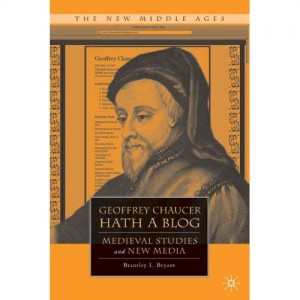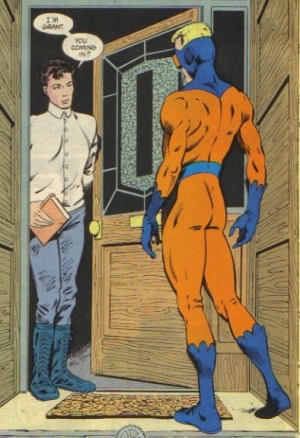Mimesis Now Conference April 5-7 2012
KEYNOTE SPEAKERS:
Ian Bogost, Georgia Institute of Technology
Stephen Halliwell, University of St. Andrews
Vivian Sobchack, UCLA
Samuel Weber, Northwestern University
www.rochester.edu/college/mimesis
Why mimesis? Why now? How have evolving forms and technologies altered the way we think about this millennia-old concept? How have practices of reproduction, imitation, copying, replication and appropriation enriched, nuanced, and complicated each other and made us continuously rethink the concept of mimesis? From the invention of writing to the advent of ‘new’ media, technologies of reproduction have transformed representational practices and shaped our perception of reality.
This three-day conference at the University of Rochester will gather together scholars in literature, art, cinema, and media studies to explore historical, interdisciplinary, and inter-media issues of mimesis.
One of the first goals of the Critical Digital Humanities (CDH) collective has been to create a space for digital collaboration. This virtual space would provide a buffer between a fully completed work and a digital draft, allowing research and experimentation while allaying fears of creative failure. However, as so often occurs with the creation of space, the first step was one of defining limitations more so than possibilities.
For most members, privacy was the primary concern. The virtual space should shield digital creations in their nascent states from the wider audience of the Internet, for on the Web it is nearly impossible to differentiate a work-in-progress from a finalized project. Such a lack of finality, rather than a weakness of the Internet, is one of its most cherished attributes. Read more
This is where we will post our working annotated bibliography
The link below provides access to an article about the video/digital art work of Natalie Bookchin.
http://rhizome.org/editorial/2011/mar/9/out-public-natalie-bookchin-conversation-blake-sti/
The next link takes you to her website where you can view images and find links to videos of her installation works. There are also more articles and reviews pertinent to her work.
We will be discussing these articles and works at a workshop prior to Natalie’s visit where she will present on a panel with Alex Juhasz.
Media Fields Journal Issue 5 “Memory, Space and Media”
Call for Submissions
Media Fields Journal Issue 5: Memory, Space, and Media
Submission Deadline: November 15, 2011
Trends towards spatial analysis and memory studies have both emerged as vibrant and booming fields of inquiry in the humanities. In this special issue, we ask what is to be gained at the intersection of memory studies, spatial studies and media studies? What role does disciplinary specificity have to play in the conjunction of these fields? What are other ways to examine memory and space outside a paradigm of trauma?
Some scholars have begun recently to productively explore the intersection of these areas. In Remembering: A Phenomenological Study, Edward S. Casey writes that the “intimate relationship between memory and place is realized…through the lived body.” This bodily memory and its rel Read more
Chaucer Hath a Blog! Dr. Brantley Bryant discusses Medieval and New Media Studies
September 20th, 2011
Ian Ross
Show your solidarity and support this upcoming illustration of the universality of digital studies!
Professor Brantley L. Bryant (Sonoma State University) will be on campus to discuss hit blog Geoffrey Chaucer Hath a Blog http://houseoffame.blogspot.com/ and his book on medieval studies and new media. (If you haven’t yet seen it, check out the blog–today’s post brilliantly spoofs yesterday’s “apology email” from Netflix CEO Reed Hastings).
Date: Friday, Oct 14, 20011 Time: 11AM, Location: HMNSS 1500
Talk will be sponsored by the Mellon Workshop on Medieval Cultures and Postmodern Legacies. Direct all questions to andreadb@ucr.edu<mailto:andreadb@ucr.edu>.
Ian Ross, 2011.
In When Species Meet, Donna Haraway explores in depth the interactions of technology, the human species, and other biological entities within the context of modern American economic, social, and industrial constructs. Like her previous work in cyborg feminism, Haraway here claims that the interaction of human and other biological organisms creates a system in which the two become inescapably entangled in both their biological and technological existences, especially regarding the human/pet relationship as that of “companion species”. Haraway is concerned here with the ramifications which the pervading material and semiotic practices of what she calls “Biocapital” can have upon the bio/technological interactions which humanity engages in every day, such as animal testing, the purebred industry, etc. Biocapital refers to the growing industrial and economic forces based upon patenting and marketing biological processes, information, and eugenics. In response, Haraway paints a picture of the ways in which these trends affect the condition of companion species, infoldings of flesh, and other cyborg relationships by closely examining the biological/historical contexts in which these relationships are forged and grown, as well as the ramifications and consequences of birthing consumer products within those contexts. Read more
Follow this URL to read Alex Juhasz on her recent work.
http://www.mediafieldsjournal.org/online-feminist-documentary-cy/
We’ll be discussing this essay at an upcoming workshop prior to her visit.
The NY Times has reported that computer gaming is one of the most subsidized US industries. A summary of the article appears at GamePro and once there you can follow the link beyond the NY Times paywall.
http://www.gamepro.com/article/news/222833/video-games-one-of-the-most-highly-subsidized-industries-in-the-u-s-thanks-to-tax-breaks/
Scholar-activist Alex Juhasz, the lead force behind “Learning from Youtube,” and artist Natalie Bookchin, video and installation artist who recently has used youtube.com as a dynamic archive and display material in her work, will be presenting a collaborative talk on campus on November 1 2011. Stay tuned for the location.




